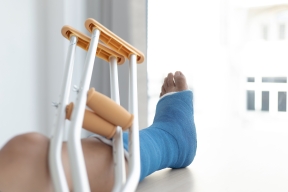The 5 Most Common Ortho Surgeries
Medically reviewed by
Dr. Pat Denton
McLeod Orthopaedics
Orthopedic surgery has a long and rich history; in fact, the study of bone, joint, and muscle issues dates back to primitive times. The term ‘orthopedics’ was coined in the 1700s, but many different cultures made significant advancements in this specialized field of medicine, including the Egyptians, the Greeks and the Romans. The Renaissance period proved to be a time of amazing discoveries in the study of the anatomy and various injuries, as well as improvements in surgical techniques and the development of orthopedic hospitals.
Orthopedic research and technology have evolved at lightning speed during the last century. According to McLeod Orthopedic surgeon Dr. Pat Denton, patients can now pursue surgical and nonsurgical treatments for most any musculoskeletal issue they are experiencing.
“Over the last couple years, we saw COVID-19 shut down many elective orthopedic procedures. In fact, the number of orthopedic surgeries fell nationwide by 22.8% during the first year of the pandemic,” says Dr. Denton. “However, forecasts show that in 2022, the number of orthopedic procedures performed worldwide is expected to reach 28.3 million.”
If you are planning to have an orthopedic surgery, you’re not alone. Here are five of the most common orthopedic surgeries in the U.S.
ACL Reconstruction: This procedure is designed to replace a torn anterior cruciate ligament, a major ligament in the knee. The incidence of ACL injury is higher in people who participate in high-risk sports such as basketball, football, skiing, and soccer. Approximately 100,000 ACL surgeries are performed in the U.S. each year.
Joint Replacement: For people with moderate to severe joint damage, joint replacement can provide relief for chronic pain from conditions, such as arthritis. It can also restore range of motion. The procedure, which is frequently performed on knees, shoulders and hips, involves removing part or all of a damaged joint and installing hardware to allow the patient to move without pain or limitations.
Arthroscopy: Surgeons use arthroscopy to help diagnose and treat a variety of joint conditions, most commonly affecting the knee, shoulder, elbow, ankle, hip or wrist. After making a very small incision (about the size of a buttonhole), a narrow tube attached to a fiber-optic video camera is inserted, allowing the surgeon to see the inside of your joint. Many types of joint damage can be repaired using this minimally-invasive surgical technique.
Back surgery: Back problems plague many people, and there are a variety of treatments available, such as physical therapy. However, at times, back surgery is a necessary option for treating serious injuries or nerve compression. Some common reasons to consider back surgery are a herniated or ruptured disk, a fractured vertebrae or degenerative disk disease.
Ankle surgery: If you have repeated ankle sprains or if you have a foot deformity, your ligaments can start to weaken and become loose, and your ankle may be unstable. While physical therapy and special shoe inserts can provide some relief, your healthcare provider may suggest lateral ankle ligament reconstruction if earlier, less-invasive treatments haven’t worked. This surgery is designed to tighten and firm up one or more ligaments on the outside of your ankle.
Find an Orthopedic Specialist near you.
-
McLEOD REGIONAL MEDICAL CENTER FLORENCE
843-777-2000 -
McLEOD DARLINGTON
843-777-1100 -
McLEOD DILLON
843-774-4111 -
McLEOD LORIS
843-716-7000 -
McLEOD SEACOAST
843-390-8100 -
McLEOD CHERAW
843-537-7881 -
McLEOD CLARENDON
803-433-3000



-
McLEOD REGIONAL MEDICAL CENTER FLORENCE
843-777-2000 -
McLEOD DARLINGTON
843-777-1100 -
McLEOD DILLON
843-774-4111 -
McLEOD LORIS
843-716-7000 -
McLEOD SEACOAST
843-390-8100 -
McLEOD CHERAW
843-537-7881 -
McLEOD CLARENDON
803-433-3000
 Find a Doctor
Find a Doctor  Locations
Locations  Services
Services 